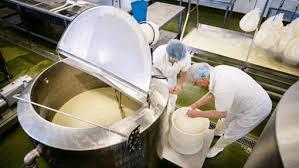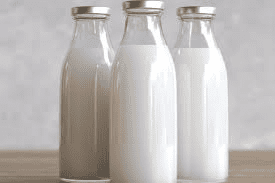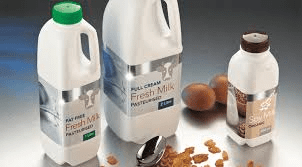Processing, packaging, and exporting dairy milk involves several key steps to ensure that the milk is safe, high-quality, and ready for international markets. The journey begins with the dairy farming process, where cows are raised and milked. Proper care, nutrition, and health monitoring of the cows are essential to produce high-quality milk. Once the milk is collected, it must be processed quickly to maintain freshness and safety.
The first step in processing dairy milk is milking. The milk is collected using clean, sanitized equipment to prevent contamination. The milk is then immediately cooled to a temperature of about 4°C (39°F) to slow bacterial growth and maintain its quality. Cooling is typically done using a bulk tank or chiller.
Once cooled, the milk is transported to a processing plant where it undergoes several treatments. The first treatment is pasteurization, which involves heating the milk to a specific temperature for a set period to kill harmful bacteria. There are different methods of pasteurization, such as high-temperature short-time (HTST) or ultra-high temperature (UHT) pasteurization. HTST heats the milk to 72°C (161°F) for 15 seconds, while UHT heats it to 135°C (275°F) for a few seconds. Pasteurization is crucial for ensuring the milk is safe for consumption and has a longer shelf life.
After pasteurization, the milk is homogenized. Homogenization is a process that breaks down fat molecules in the milk so they are evenly distributed and do not separate. This gives the milk a smooth, uniform texture. The milk is then cooled again and tested for quality and safety. This includes checking for any remaining bacteria, ensuring the milk meets legal standards, and testing for flavor and appearance.
Once the milk passes quality tests, it is ready for packaging. Proper packaging is essential to protect the milk from contamination and spoilage. Milk is typically packaged in various forms, including cartons, bottles, or plastic jugs. The packaging material is sterilized to ensure it is clean before filling. The milk is then filled into these containers in a sterile environment to prevent contamination. Each container is sealed tightly to maintain freshness and prevent leakage.
Labeling is an important part of packaging. Labels provide information such as the milk’s expiration date, nutritional content, and any handling instructions. Accurate labeling helps ensure that consumers have the necessary information about the product.
After packaging, the milk is stored in refrigerated conditions to keep it fresh until it is ready for distribution. Proper storage is crucial to maintaining the quality and safety of the milk.
Exporting dairy milk involves several additional steps to meet international standards and regulations. Exporters must comply with both domestic and international regulations regarding dairy products. This includes obtaining necessary certifications, such as health certificates, which confirm that the milk has been processed and handled according to safety standards. The milk must also be accompanied by documentation such as certificates of origin, which verify where the milk was produced.
Transportation is a critical part of exporting dairy milk. The milk must be kept at a constant, low temperature during transit to prevent spoilage. Refrigerated containers, or reefer trucks, are used to maintain the proper temperature. Temperature monitoring systems are often used to ensure that the milk remains within the required temperature range throughout the journey.
Upon arrival in the destination country, the dairy milk goes through customs clearance. This involves checking the documentation and inspecting the milk to ensure it meets the importing country’s regulations. If everything is in order, the milk is cleared for entry into the market and distributed to retailers, wholesalers, or directly to consumers.
Processing, packaging, and exporting dairy milk involves several detailed steps to ensure that the milk is safe, high-quality, and ready for international markets. From the initial milking and pasteurization to homogenization, packaging, and compliance with export regulations, each step is crucial in delivering a product that meets global standards. By following best practices throughout the entire process, producers and exporters can provide dairy milk that satisfies international customers and adheres to regulatory requirements.
How to Process Dairy Milk for Exportation

1. Milk Collection: Begin by collecting milk from healthy cows. Ensure that the milk is collected in clean, sterilized containers to prevent contamination.
2. Milk Testing: Test the milk for quality, including checking for bacteria, antibiotics, and other contaminants. This step is crucial to ensure the milk meets safety standards.
3. Pasteurization: Heat the milk to kill harmful bacteria and extend its shelf life. Pasteurization typically involves heating the milk to 72°C (161°F) for at least 15 seconds, then cooling it rapidly.
4. Homogenization: Process the milk to break down fat molecules so they are evenly distributed, preventing cream from separating. This helps in achieving a consistent texture and taste.
5. Filtration: Filter the milk to remove any remaining impurities or particulates. This ensures a smooth and clean product.
6. Standardization: Adjust the milk’s fat content to meet the desired specifications. This step ensures consistency in the final product, whether it’s whole milk, 2%, or skim milk.
7. Quality Control: Conduct thorough quality checks to ensure the milk adheres to safety and quality standards. This includes checking taste, odor, and appearance.
8. Packaging: Package the milk in sterilized, airtight containers. Ensure that packaging materials are suitable for maintaining freshness and preventing contamination.
9. Storage: Store the packaged milk in a cold storage facility to keep it at the required temperature, typically between 1°C and 4°C (34°F to 39°F).
10. Documentation: Prepare all necessary export documentation, including health certificates and quality assurance reports. This documentation is essential for meeting regulatory requirements in the destination country.
Read Also: Different Systems of Snail Production
How to Package Dairy Milk for Exportation

1. Choose Packaging Materials: Use high-quality, food-grade materials like plastic bottles, cartons, or pouches. These materials should be designed to keep the milk fresh and prevent leaks.
2. Ensure Sterility: Make sure all packaging materials are sterilized before use. This helps in maintaining the milk’s quality and preventing contamination.
3. Fill and Seal: Fill the containers with milk and seal them tightly to prevent any air from entering. Proper sealing is essential to keep the milk fresh and safe during transport.
4. Labeling: Label each package with essential information, including product name, expiration date, and nutritional details. Accurate labeling is important for compliance and consumer information.
5. Date Coding: Include production and expiration dates on each package. This helps in tracking the freshness of the milk and ensures that products are used within their safe period.
6. Temperature Control: Package the milk under temperature-controlled conditions to maintain its freshness. Ensure that the milk is chilled before packaging to avoid any temperature fluctuations.
7. Inspect Packaging: Check each package for defects or leaks. Properly inspected packages ensure that the milk remains safe and uncontaminated during shipping.
8. Bulk Packaging: For export, group individual packages into bulk cartons or pallets. Use shrink wrap or other materials to stabilize and protect the bulk packages during transport.
9. Compliance: Ensure that packaging meets the export destination’s regulations, including labeling requirements and material specifications.
10. Documentation: Prepare and attach any required export documents, such as certificates of origin and health certificates, to the packaging. Proper documentation facilitates smooth customs clearance.
How to Export Dairy Milk for Profits
1. Market Research: Conduct research to identify potential markets, understand demand, and analyze pricing. Understanding market trends and consumer preferences helps in making informed decisions.
2. Regulatory Compliance: Familiarize yourself with the export regulations of both your country and the destination country. Ensure that your milk meets all health and safety standards required for export.
3. Certifications: Obtain necessary certifications, such as sanitary and phytosanitary certificates, to validate the quality and safety of your milk. These certifications are crucial for gaining trust in international markets.
4. Pricing Strategy: Develop a pricing strategy that reflects the costs of production, packaging, and shipping. Consider market conditions and competitor pricing to set a competitive yet profitable price.
5. Find Export Partners: Identify and establish relationships with reliable distributors or importers in the target markets. Building strong partnerships can help in expanding your reach and increasing sales.
6. Negotiate Terms: Discuss and agree on terms of sale, including payment methods, delivery schedules, and contract terms. Clear agreements help in managing expectations and avoiding disputes.
7. Logistics Planning: Plan the logistics for shipping, including choosing reliable transport providers and managing shipping documents. Efficient logistics ensure timely delivery and maintain the quality of the milk.
8. Quality Control: Implement stringent quality control measures throughout processing, packaging, and shipping. High-quality products are more likely to attract repeat customers and positive feedback.
9. Marketing and Promotion: Develop a marketing strategy to promote your dairy milk. Utilize online platforms, trade shows, and local partnerships to build brand awareness and attract buyers.
10. Monitor and Adapt: Continuously monitor market trends, customer feedback, and sales performance. Be ready to adapt your strategies based on market changes and customer needs to maximize profitability.
Read Also: Snail Farming Step-by-Step Beginners Guide
Frequently Asked Questions (FAQs) About Dairy Milk

1. What is dairy milk?
Dairy milk is a liquid produced by lactating cows. It is a rich source of essential nutrients such as calcium, protein, and vitamins, commonly consumed in various forms like whole milk, skim milk, and flavored milk.
2. How is dairy milk processed?
Dairy milk is processed through several steps, including collection, testing, pasteurization, homogenization, filtration, standardization, and packaging to ensure safety, quality, and freshness.
3. How should dairy milk be stored?
Dairy milk should be stored in a refrigerator at temperatures between 1°C and 4°C (34°F to 39°F). Proper storage helps in maintaining freshness and extending the shelf life of the milk.
4. What are the different types of dairy milk?
Different types of dairy milk include whole milk, 2% milk, 1% milk, and skim milk. These varieties differ in their fat content and nutritional profile.
5. Can dairy milk be exported?
Yes, dairy milk can be exported. However, it must meet specific health and safety standards and regulations set by both the exporting and importing countries.
6. What are the benefits of drinking dairy milk?
Dairy milk provides essential nutrients such as calcium, protein, and vitamins that support bone health, muscle function, and overall well-being.
7. How long can dairy milk be kept before it goes bad?
Unopened dairy milk typically lasts for about one to two weeks past its expiration date when stored properly in a refrigerator. Once opened, it should be consumed within a week.
8. What is pasteurization?
Pasteurization is a process of heating milk to a specific temperature for a set period to kill harmful bacteria without significantly affecting the milk’s nutritional value or taste.
9. How can I tell if dairy milk has gone bad?
Signs of spoiled milk include a sour smell, off-taste, and changes in texture such as curdling. If you notice any of these signs, it is best to discard the milk.
10. What are common dairy milk products?
Common dairy milk products include cheese, yogurt, butter, and cream. These products are made from milk through various processing methods and are used in a wide range of culinary applications.
Read Also: Low-Maintenance Plants for Beginners

